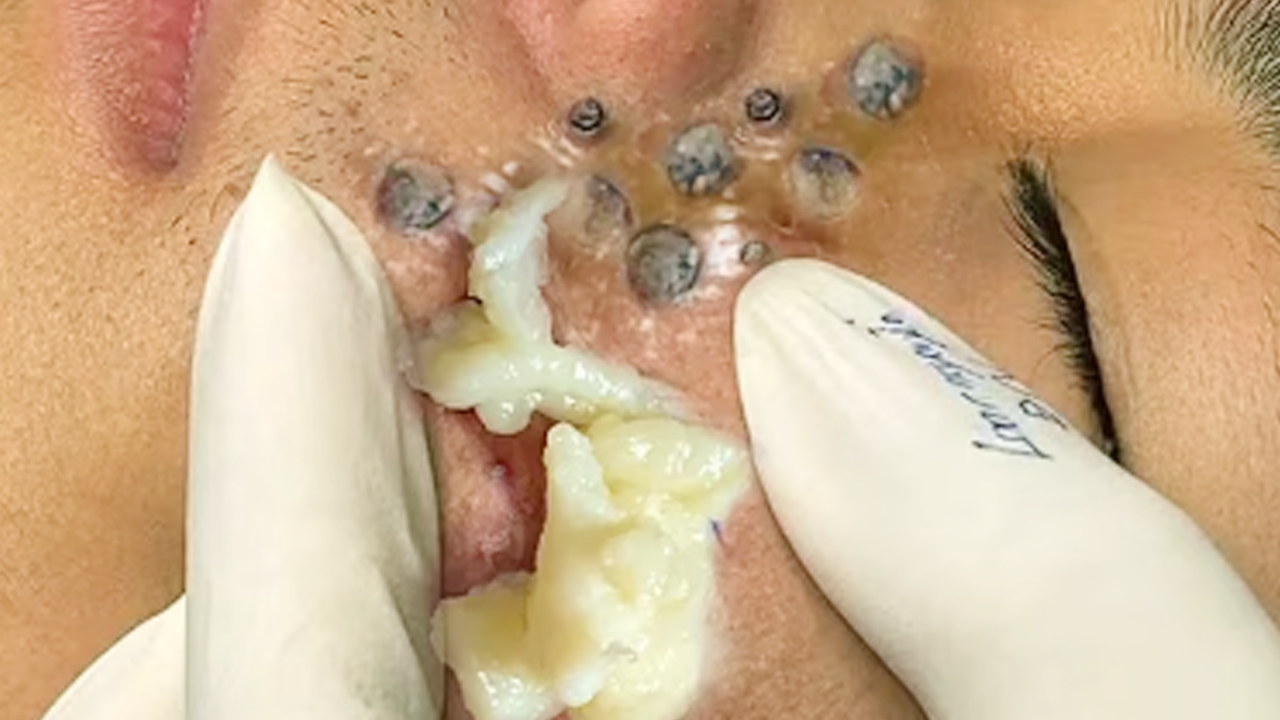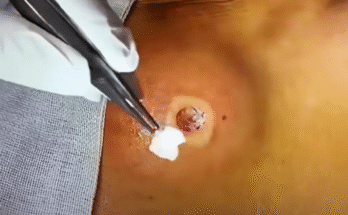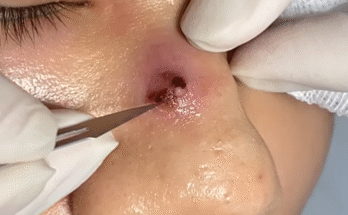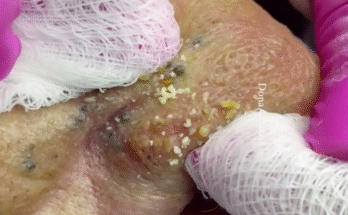Understanding Cystic Acne: A Comprehensive Guide
Cystic acne is a severe form of inflammatory acne, characterized by deep, painful, pus-filled lesions that develop beneath the skin’s surface. Unlike milder forms of acne, cystic acne often leads to significant scarring, demanding a more proactive approach to management.
The Science Behind Cystic Acne
The root cause of all acne, including the cystic variety, is a blockage of skin pores. This blockage occurs when a combination of excess sebum (oil), dead skin cells, and bacteria accumulates within the pore. In cystic acne, this build-up triggers a significant inflammatory response deep within the dermis (the skin’s middle layer). This inflammation results in the formation of large, painful cysts.
Cystic Acne vs. Nodular Acne: What’s the Difference?
While both cystic and nodular acne present as deep, painful bumps, a key distinction lies in their composition. Cystic acne lesions are filled with pus, a fluid indicative of infection. Nodules, on the other hand, are firmer and more solid, lacking the pus-filled characteristic of cysts. Both, however, carry a similar risk of scarring.
Identifying Cystic Acne: Symptoms and Appearance
Cystic acne presents as inflamed, red lumps beneath the skin’s surface. These lesions can range in size from a pea to a dime and are often tender or painful to the touch. Some cysts may develop a whitish-yellow head, oozing pus, and potentially forming a crust. While commonly found on the face, cystic acne breakouts can also occur on the back, chest, shoulders, neck, buttocks, and upper arms.
Causes and Risk Factors
Several factors contribute to the development of cystic acne. These include:
- Age: Adolescence and young adulthood are periods of heightened hormonal activity, making individuals more susceptible. Hormonal fluctuations can also occur during menopause, potentially triggering breakouts.
- Genetics: A family history of acne increases the likelihood of developing cystic acne.
- Hormonal Changes: Hormonal imbalances, particularly during puberty and menopause, significantly influence sebum production, contributing to clogged pores.
- Stress: While not a direct cause, stress can exacerbate existing acne conditions.
Diagnosis and Treatment Options
A dermatologist’s examination is crucial for diagnosing cystic acne. Self-treatment with over-the-counter products is generally ineffective and may even worsen the condition, increasing the risk of scarring.
Professional Treatment Modalities
Treatment strategies for cystic acne often involve a combination of approaches:
- Topical Medications: Antibiotic creams, gels, lotions, and solutions help combat bacterial infection and reduce inflammation. Azelaic acid and salicylic acid aid in exfoliation and bacterial reduction. Benzoyl peroxide reduces bacterial populations, and retinoids stimulate cell turnover, preventing further pore blockages.
- Oral Antibiotics: Systemic antibiotics are prescribed to address widespread bacterial infection.
- Hormonal Therapy (for women): Spironolactone may be prescribed to regulate hormone levels contributing to acne.
- Isotretinoin (Accutane): This powerful oral retinoid is reserved for severe, unresponsive cases and requires careful monitoring due to potential side effects.
- Injections: Cortisone injections directly into the cyst rapidly reduce inflammation and size.
- Incision and Drainage: In some cases, a dermatologist may choose to surgically drain the cyst.
Preventing Cystic Acne: Lifestyle and Skincare Habits
While not always preventable, incorporating these habits can significantly reduce your risk:
- Gentle Cleansing: Wash your face twice daily with a mild, non-comedogenic cleanser, avoiding harsh scrubbing.
- Moisturizing: Use a non-comedogenic moisturizer to maintain skin hydration.
- Makeup: Opt for non-comedogenic makeup and remove it completely before bed.
- Hands Off: Avoid touching your face to minimize bacterial transfer.
- Hair Hygiene: Wash your hair regularly to prevent oily build-up.
- Diet: Limiting simple sugars and dairy may help reduce breakouts in some individuals.
- Stress Management: Employ stress-reduction techniques to minimize flare-ups.
Long-Term Outlook and Potential Complications
Most individuals can effectively manage cystic acne to prevent severe breakouts and scarring. While it often improves with age as hormone levels stabilize, persistent or untreated cystic acne can impact self-esteem. Improperly treating cysts, such as squeezing or picking, increases the risk of infection and scarring. Pigmentation changes (temporary dark or light spots) at the site of healed cysts are also possible.
When to Seek Medical Attention
Consult your healthcare provider if you experience:
- Persistent, painful, or swollen pimples.
- Acne that significantly impacts your self-confidence.
- Signs of skin infection (increased pain, redness, swelling, warmth).
Questions to Ask Your Dermatologist
When seeking professional help, consider asking:
- What are the underlying causes of my cystic acne?
- What treatment plan do you recommend, and what are the potential side effects?
- How can I minimize my risk of scarring?
- What preventative measures can I take to reduce future breakouts?
Remember, early intervention and professional guidance are key to effectively managing cystic acne and preventing long-term complications. Avoid the temptation to self-treat; consult a dermatologist for personalized care and treatment strategies.



